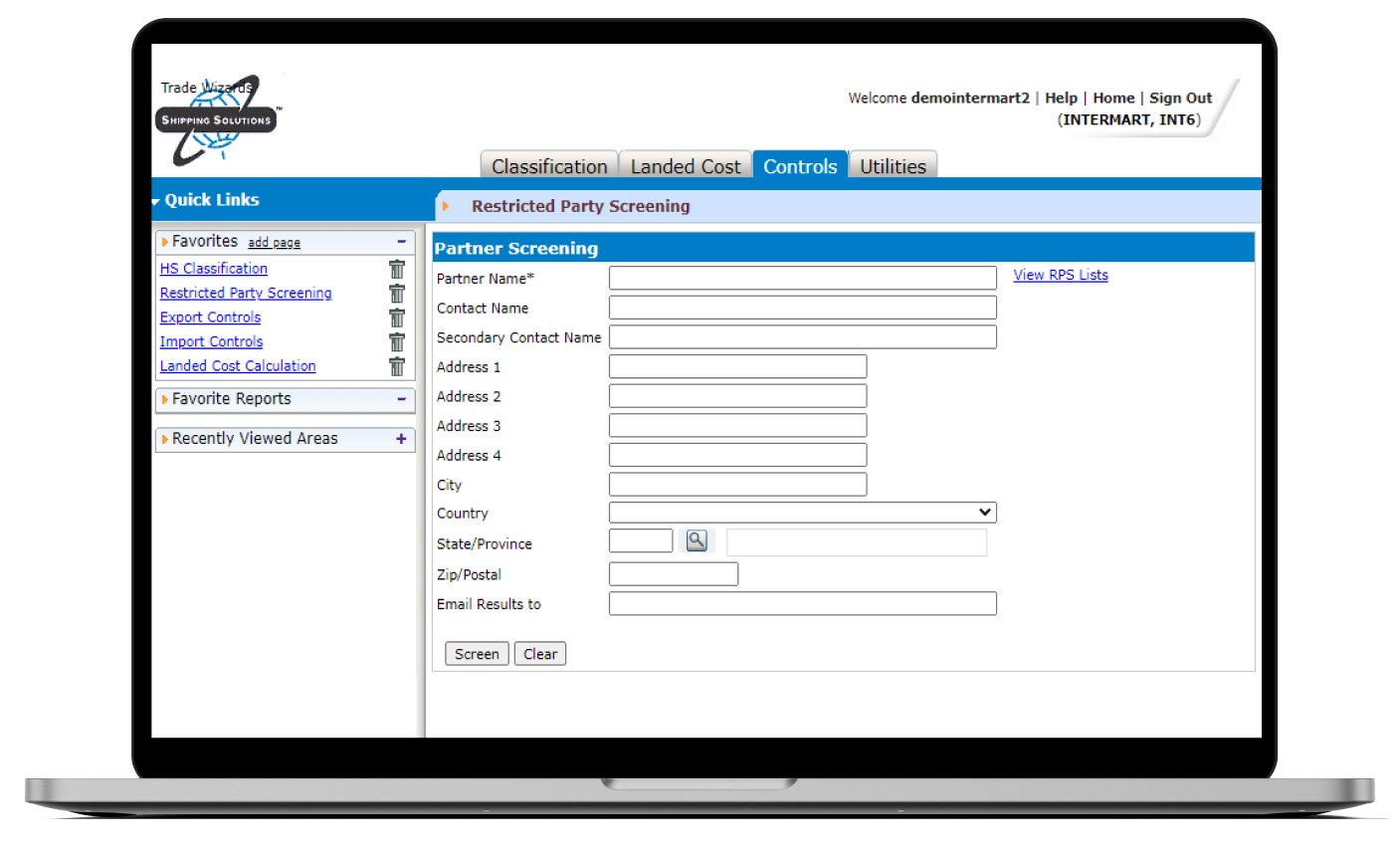The International Trade Blog Import Procedures
The Post-Entry Audit: Tips for Auditing Your Customs Entry
On: January 23, 2005 | By:  John Goodrich |
5 min. read
John Goodrich |
5 min. read
 Section 1484 of the Customs Code states:
Section 1484 of the Customs Code states:
[T]he … “importer of record” … or … an agent … shall, using reasonable care …
make entry…, and complete the entry by filing with the Customs Service the
declared value, classification and rate of duty applicable to the merchandise …
and such other information as is necessary to enable the Customs Service to—
(i) properly assess duties on the merchandise,
(ii) collect accurate statistics with respect to the merchandise, and
(iii) determine whether any other applicable requirement of law …is met.
As importers, most of us go to great lengths to ensure our customs brokers receive copies of commercial invoices and our harmonized classification lists to ensure they are making accurate declarations to Customs with our entries. Shouldn’t that be enough to meet the reasonable care standard suggested within the law?
One would hope so, but as business people we live in dynamic environments. Despite our best efforts to design quality systems, the real world intrudes in the form of change and human error.
Given inaccurate commercial documents, the broker will make an inaccurate entry to Customs.
What is an importer to do? A best practice among importers is to perform a post-entry audit of the documentation provided by the customs broker, comparing it with your company’s own transactional records.
The Four-Point Audit
Most companies perform some version of a three-point accounting audit before releasing funds to a supplier. With this type of audit the vendor’s invoice, the purchase order and the company’s receiving records are compared. If the three records match based on price and quantity then funds are released to the vendor.
The post-entry audit adds one more step in the process: the customs entry. Under a four-point audit, the customs entry must be checked against the accounting records to ensure it too agrees with the price actually paid to the vendor and with the quantities actually received by the importer.
If the entry matches the commercial transaction, then the entry was accurate. If the entry does not match, then the importer should instruct the broker to amend it and bring it into compliance.
Let’s take a closer look at the entry itself and see how the audit can be accomplished.
The Customs Entry
The entry I am referring to is detailed in a form called the Entry Summary. This form is also known by its number: 7501.
The Customs and Border Protection Form 7501 is, at time of this writing, undergoing a transition. The proposed new format can be viewed online.
For those familiar with the old format, the new form should be easy to read. For the remainder of the article I will refer to the new version of the form.
Compare the Value
Field 32 of the Entry Summary is where the broker reports the dutiable value to Customs. The value will be declared in whole dollars using standard mathematical rounding rules. Remember, it is not enough to simply check this value against the invoice supplied with the broker’s document package; you must compare the value with your accounts payable records.
If you are fortunate to have a simple one-line entry, you can compare the total entered value declared in field 35 with your accounting records.
Check for these common errors when comparing value:
- Inverting numbers.
- Adding extra zeros.
- Failing to convert from a foreign currency.
- Including freight, insurance or buying agency fees in the value.
This simple check cannot control for more complex valuation issues such as assists.
Compare the Quantity
If required by the harmonized code, your broker will report statistical quantities on the entry. This quantity will be reported in field 31. Often this quantity is declared in units, which directly correspond to your company’s receiving records.
As with value, it is not uncommon to see data entry errors in this field. Additional errors include:
- Incorrect conversion from English to metric units.
- Reporting incorrect statistics due to incorrect HTS classification.
If you pay duty based on the unit quantity you will have an additional incentive to ensure the quantity is accurately reported.
While You Are at It
As long as you are comparing commercial values and quantities on the 7501, you should take the time to check the fields listed below. As you become more familiar with the 7501, you may choose to audit the accuracy of all of the fields.
Harmonized Codes, Field 29: Make sure this corresponds with the HTS code you assigned and directed your broker to use.
Duty Rates, Field 33: For those of you eligible for duty free treatment or duty reductions, checking this field may save you considerable amounts of money.
Duty Amounts, Field 34: Although your broker’s system usually calculates this field, it is helpful to check the math. Usually the duty amount will be the duty rate (Field 33) times the declared value (Field 32).
Other Fee Summary (under Field 35): This field should summarize the merchandise processing fee (MPF) and any harbor maintenance fees (HMF) owed on the shipment. These fees are calculated as:
- MPF = .21% of the dutiable value. Minimum $25, Maximum $485.
- HMF = .125% of the dutiable value for ocean shipments entering via US water ports maintained by the Army Corp of engineers. (19 CFR § 24.24)
Country of Origin, Field 10: The country of origin is the most easily defined as the country in which your product takes on its harmonized code. Inaccurate reporting in this field might negate the duty benefits of a duty preference program or free trade agreement.
Exporting Country, Field 14: This is the country from which your imported product began its trip to the United States. Sometimes your broker is unaware of the full business transaction and simply declares the country of the last foreign shipping port as reported on the bill of lading. Again, inaccurate reporting in this field might negate the benefits of a duty preference program or free trade agreement.
Related Parties, Field 32c: There is nothing wrong with being related to your foreign supplier. Customs merely needs to know about the relationship and may subject your declared value to a higher level of scrutiny. If your related foreign supplier has a different corporate name than your U.S. company, your broker may inaccurately record the relationship.
Create a Checklist
As a former import manager I created an audit checklist for my staff. This list was used to ensure the auditor controlled for the key issues of:
- Classification,
- Valuation,
- Duty payment, and
- Document retention.
Ultimately the checklist became a part of the permanent import file, documenting the existence of the audit and any actions taken as a result.
Amend the Entry and Address the Root Causes
What should you do if you discover an inaccuracy? Amend the entry! The fine print at the bottom of the Entry Summary states:
I will immediately furnish to the appropriate CBP officer any information showing a different statement of facts.
Although this may seem to be an onerous and costly process for what might seem like minor inaccuracies, your import program will benefit in the long term.
Don’t simply stop with amending your entries. If you don’t address the root cause, you will never stem the tide of mistakes. You will drive your broker and your staff batty with the endless corrections and details. Study the sources of the inaccuracies and take the incremental steps needed to strengthen your corporate import program.
Get Started Now! It’s Worth It!
If you feel this to be one more unfunded federal mandate, know this: Post-entry audit is good business. Importers who implement a post-entry audit process more than recoup their investment in duty savings.
What are you waiting for? Get started now!

About the Author: John Goodrich
John Goodrich is an International Trade Consultant and Licensed Customhouse Broker with more than 25 years of experience in international trade. He is currently the principal in the consulting firm of JD Goodrich & Associates where his varied industry experience results in practical, actionable advice for his clients.
An active member in the Twin Cities round table of the Council of Supply Chain Management Professionals (CSCMP), he takes a strategic view of the roles of international compliance and logistics in the greater supply chain.

